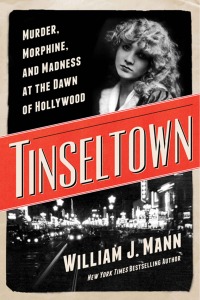(William J Mann; 463 pages; HARPER BOOKS/HARPER-COLLINS PUBLISHERS; 2014)
William J Mann’s new book is an historical, scholarly and meticulously researched look at the earliest days of Hollywood that reads like one of the best murder mysteries you’re likely to come across this year. The story delves into the lengths that an entire industry would go to to cover up a scandal… any scandal. As “moving pictures” or “flickers,” as they were called, began to take hold of a public looking for the next new thing in entertainment, there were no rules; churches and civic groups didn’t like that and began crusades to censor the industry in hopes of crippling it to the point that it would fold in upon itself and just go away. Those moguls who were making money hand over fist were, naturally, not inclined to let that happen.
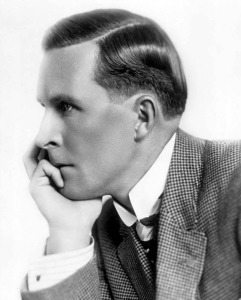
Beginning in 1917, and through 1923, drugs, suicide, murder, rape and lasciviousness of every nature befell the motion picture industry, as the hard-living individuals who appeared on the nation’s silver screens carried on their private lives. In retrospect, these things were happening in virtually every walk of life but, the utility worker down the street stepping out on his wife wasn’t as glamorous or newsworthy as Roscoe “Fatty” Arbuckle’s reportedly drunken soiree where a young actress named Virginia Rappe was one of the guests. Arbuckle was, famously, accused of raping the young woman in a drunken stupor, his enormous weight causing her bladder to rupture, leading to her death. The courts (and three separate juries – the first two unable to come to a verdict) eventually acquitted Arbuckle of all charges, but his career was, ostensibly, over from the time he opened the door of his hotel room to the revelers on that day in September, 1921 when Virginia Rappe took ill. He was brought back to Paramount Studios on a probationary status; the studio released one of the movies Fatty had made before his arrest and all seemed well… until the 1920s’ version of the thought police threatened to close down every theater that would show such filth as a Fatty Arbuckle comedy. The Roscoe Arbuckle story and trial play as a backdrop to the real tale here.
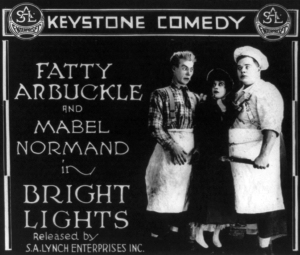
Hollywood, in the ’20s, was a very different place than it is today; the movie industry was definitely more concerned with the public’s opinions of their stars. Paying off newspaper editors to keep their stars’ names out of the headlines, covering up evidence and flat out lying to the authorities was standard operating procedures from studio heads (one, in particular, Adolph Zukor of Famous Players-Lasky, later Paramount, was especially adept at keeping the tarnish off of his stars). One of the foremost directors of this early era of movie-making was William Desmond Taylor; Billy, as the ladies called him, worked for Zukor. Sometime around eight in the evening of February 1, 1922, Taylor was murdered in his home. The list of suspects in the crime was a crowded one, including stars and former stars of the film industry, friends, employees and former employees of the deceased, the haves and the have-nots and the power players of the Hollywood movie machine. The murder was virtually forgotten until 1964, when one of the original suspects made a dying confession to the son of a neighbor; still, it took years of digging and research before a definitive answer to an eighty year-old mystery could be laid to rest. As ghoulish as it may sound, the fun of this story is wading through the murder and the depravity that led to it. Mann is a master storyteller, delivering a riveting look at the early twentieth century’s movers and hustlers, all the while never losing sight of the facts of the case; sometimes those facts and the wildly over-the-top personalities involved seem far to bizarre to be a true crime story.
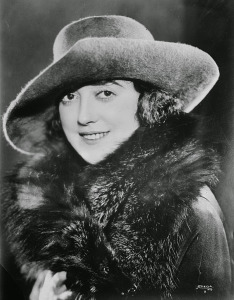
The suspects include the four notable women in Taylor’s life: Mabel Normand, a hard-living comedy actress (she was alternately known as was “the Queen of Comedy” and “the Female Chaplin”), best known for a series of films co-starring Arbuckle and a very public dalliance with cocaine and other illicit drugs, including bootleg liquor (it was, after all, the height of prohibition); Margaret “Gibby” Gibson, a struggling actress and two-bit scam artist who fell out of favor at the major studios after being arrested for prostitution in 1917, the first of the many scandals to hit the industry over the next six years (she tried to reinvent herself by trimming five years off her age and calling herself Patricia Palmer… she was marginally more successful); Mary Miles Minter, a teenage beauty touted as the “next Mary Pickford,” with an all-consuming schoolgirl crush on Taylor; Charlotte Shelby, a bullying stage mother who had forbidden her daughter, Mary, to see Taylor and threatened Taylor, telling him to keep away from her meal-ticket. Most of the circumstantial evidence suggested that Mary Minter’s mother was the guilty party, a fact exacerbated by a district attorney seemingly protecting her at every turn in the case. As much as the life and foibles of William Desmond Taylor are laid bare here, Mann, likewise, does his due diligence in uncovering even the minutest detail in the lives of these four remarkable women; no stone is left unturned.

Other candidates included Edward Sands, Taylor’s former valet, who was fired for forgery and other indiscretions (some believed Sands had been blackmailing the director, who’s secret life – lives, actually – would have destroyed him and embroiled the studio in another scandal); Don Osborn, “Blackie” Madsen or any of the other two-bit thugs and confidence men that “Gibby” took up with in her never-ending effort to be “somebody,” which to her, meant someone with an endless supply of cash; an unknown drug dealer that Taylor threw out of Normand’s house after the man tried to sell dope to the recovering addict; one of the many religious zealots who saw Taylor’s life and work as morally abhorrent. Some of the suspects were dismissed out of hand, particularly the cute, little eighteen year-old, Mary Minter, because… well, who ever heard of a little girl killing someone? Others were investigated and cleared, including the first suspect, Taylor’s then-current valet, Henry Peavey; that scenario seemed to make the most sense initially, as Peavy had a record (for soliciting young men for sexual purposes… not only was that illegal, it was “send-a-guy-to-Hell” immoral) and, of course, he was black.
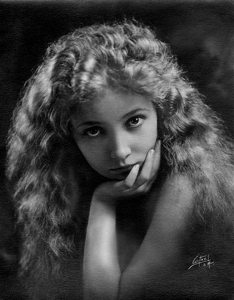
As Mann relates all of the available information, peeling away the layers of cover-ups, lies, innuendo and downright fiction, he breathes life into the long-dead bones of, not only Taylor, but everyone related in any way to the concentric circle of his influence. Obviously, there is much more to this story than I’ve related here; my job is to pique your interest about the book without giving everything away. Any fan of the silent film era, of historic insights into the years leading up to the dawn of what became known as “the Roaring ’20s,” or of a good old murder mystery will find much to like about TINSELTOWN. It would have been very easy to turn this story into a boring, sterile thesis, offering the facts and nothing but the facts in a very precise, analytical fashion. But, then, who would want to read something like that? Certainly not me! Thankfully, William J Mann understood that and, without ignoring evidence and substance in favor of literary glitz, has written what is generally referred to as a “page-turner.”

